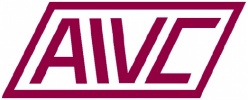This joint conference provided a unique opportunity for dialogue among attendees to facilitate understanding of current indoor air quality policies, standards and best practices with themes such as regulatory vs. voluntary compliance for achieving Indoor Air Quality (IAQ), the role of IAQ in sustainable building programmes and the relationship between IAQ and Indoor Environmental Quality (IEQ), etc.
The conference programme included internationally acclaimed keynote speakers, original peer reviewed papers, the latest in indoor environmental quality control, plus workshops and panel discussion.
This conference guided the researchers, experts, policy makers, building owners and operators, engineers, designers, IAQ professionals, commissioning agents, architects and other interested participants about what works and what really doesn’t work when tackling major improvements in indoor air quality. Target facilities included residential and non-residential buildings.
The keynote speakers were:
- Chris Pyke, U.S. Green Building Council
- Howard Wolf, HW3 Group (IICRC)
- Pawel Wargocki, Technical University of Denmark
- David Jacobs, National Center for Healthy Housing
- David Rowson, U.S. Environmental Protection Agency
Thirteen paper sessions with 60 papers were included, covering IAQ metrics, ventilation and IAQ measurement methods, residential IAQ, natural ventilation, infiltration, approaches and tools for achieving better IAQ and others.
The technical programme’s strength was in the steering committee’s influential industry ties to organise 13 sessions on current IAQ practices, standards and best practices with speakers who were leaders in the industry. These sessions included:
- Where Are We Going with IAQ Metrics?
- Future of IAQ Sensors and Controls
- Demand-controlled Ventilation
- The Policymaker’s Perspective
- IEA EBC Annex 68 Project: IAQ Design and Control in Low Energy Residential Buildings
- Evolution and State of the Art of the Residential Ventilation Standard for North America (ASHRAE 62.2)
- Continuous Assessment of IEQ




